When it comes to project management, the Agile philosophy stands out among the rest. It combines several tools to create better organization, communication, and productivity for your team.
Scrum is only a small part of Agile solutions, but it can make all the difference for your business. Since scrum is a piece of the whole here, you don’t technically have to choose between them. However, if you’re looking for a comprehensive, all-inclusive solution, Agile has much more to give.
Agile Pros and Cons
Pros
- Versatile platform
- Wide range of industries
- Centers the customer
Cons
- Difficult to plan for resources
- Unclear progress measurements
Scrum Pros and Cons
Pros
- Focused work sprints
- Continuous feedback for improvements
- Easy to use
Cons
- Not suitable for larger teams
- Difficult to get ahead on work
Ease of Use: Scrum Wins
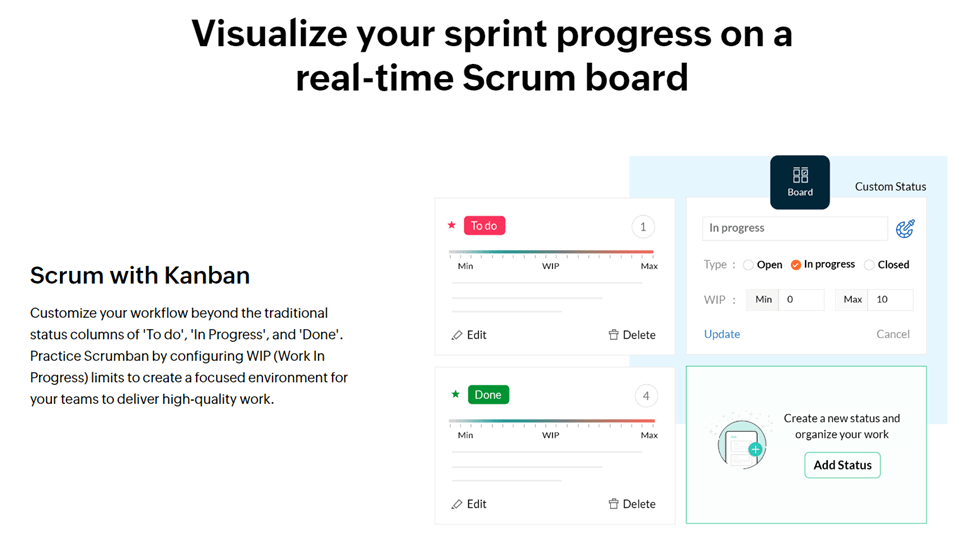
Many Agile solutions are built for ease of use, including Monday.com. However, it can take more effort to combine multiple methodologies.
You have to figure out how to use each one and whether it’s right for your team. Then, you need to put them together to see if they increase team productivity long-term. Building a whole Agile system for your team takes some trial and error, which can delay starting valuable projects.
Scrum has one of the shortest learning curves as an individual Agile solution. Once you get Zoho or another scrum solution, you have access to boards that you can arrange in whatever way works for your team.
Zoho uses a drag and drop system modeled after physical whiteboards in software engineering. Its initially simple setup is just as effective virtually and helps you organize tasks into a visual layout.
Team Size: Agile Wins
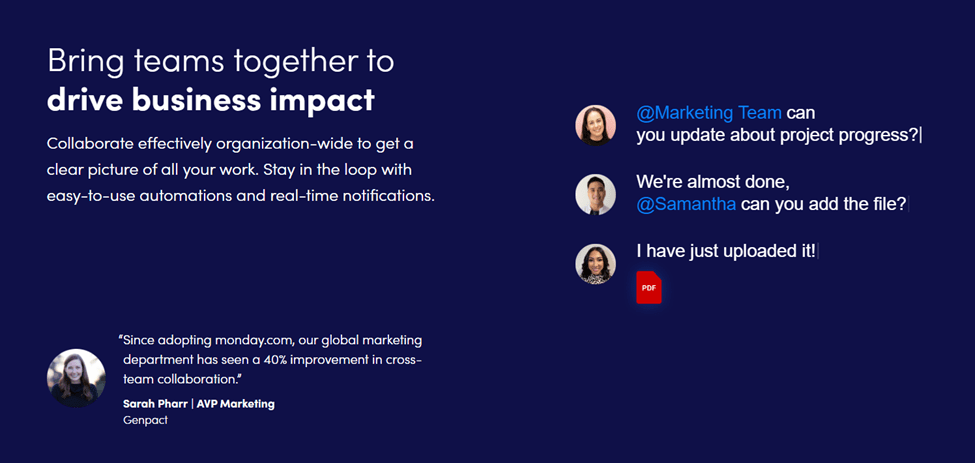
Scrum works best for teams of no more than ten people. More than that, things get disorganized and efficiency goes down. It works well for smaller teams, but if you plan to grow yours, it may have too many limitations.
Because Agile has so many frameworks, it essentially removes the team size limit. You may not be able to use one methodology on its own, but by combining them, you can increase the capacity for more team members.
Agile’s varied methodologies allow you to focus on different areas of your project, like how eXtreme Programming (XP) homes in on the customer experience while Lean Software Development (LSD) streamlines your project while reducing resources needed and the waste it produces.
Once you determine which frameworks apply to your team, Agile solutions become an asset. You can also break its solutions up based on a group’s specific focus. Agile is more flexible when it comes to team size since it functions as a system you can combine and adjust as needed.
Project Complexity: Scrum Wins

Scrum can handle complex projects by breaking them down into smaller ones. Its sprints ensure that each aspect of the process gets done, so you can’t get too far ahead without completing the current sprint.
Scrum reduces team overwhelm by separating smaller tasks within the big picture. It also helps with working toward specific goals and clear benchmarks on the way to overall project completion.
Agile allows for consistent versatility to support your team at every step, from planning to design to completion. You can always add more tasks and frameworks as needed.
It gives you various tools so that you have the right one for any part of your project, no matter its complexity. The only downside here is that you can get carried away and create never-ending projects, which can lead to difficulty measuring your team’s progress and setting KPIs.
Features: Agile Wins
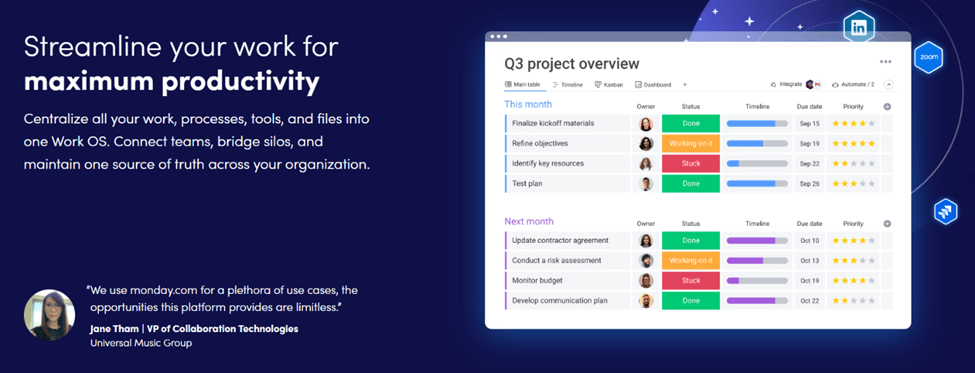
Scrum’s straightforward framework doesn’t mean it lacks features. The ones it does have are easy to understand and use.
With drag and drop, timed sprints, retrospective meetings, it gives you a solid base for project organization. Most Agile systems include scrum along with other collaborative features, like chat or documents.
Next to Agile, scrum lacks many tools that can boost productivity. Agile’s versatility as a philosophy means that it comes with a wide range of tools. It can include issue tracking, planning and design, portfolios, and much more, depending on which methodologies you use.
Scrum can’t support as many stages of your project as multiple Agile frameworks combined can. With Agile, you get a full view of your project and can add or remove elements as well as include new methods when you need to.
Price: Scrum Wins
Often, with more features comes a higher price. When comparing the price of a single tool to several, it’s not surprising that a scrum system is cheaper than a full Agile system.
Still, scrum comes out ahead in terms of value, since most project management software won’t give you every Agile tool built-in. You may still need to buy other tools separately, depending on which ones you want to integrate.
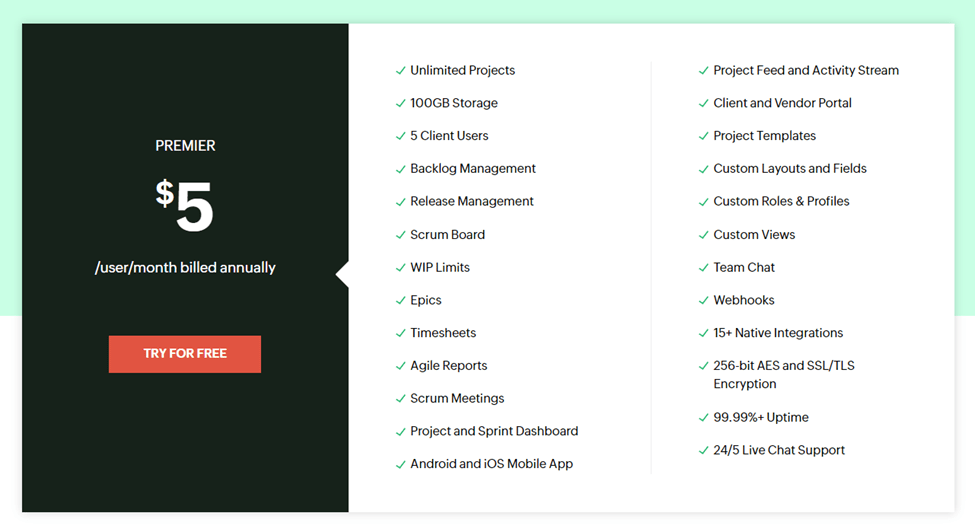
Zoho gives you plenty of scrum-specific tools at a great price. It has a free version, but it offers its Professional package on a sliding scale cost based on how many users you have.
Starting at $5 per user per month, you can add anywhere from one to 500 users. After you pass the 100-user mark, the price per person starts to go down.
With Zoho, you don’t pay for extra features, since Zoho gives you everything in one package. You get unlimited projects with scrum boards, meetings, chat, and even a vendor portal so that you can collaborate with stakeholders, too. The software’s reports help you ensure that the software does its job well and supports a cohesive team.
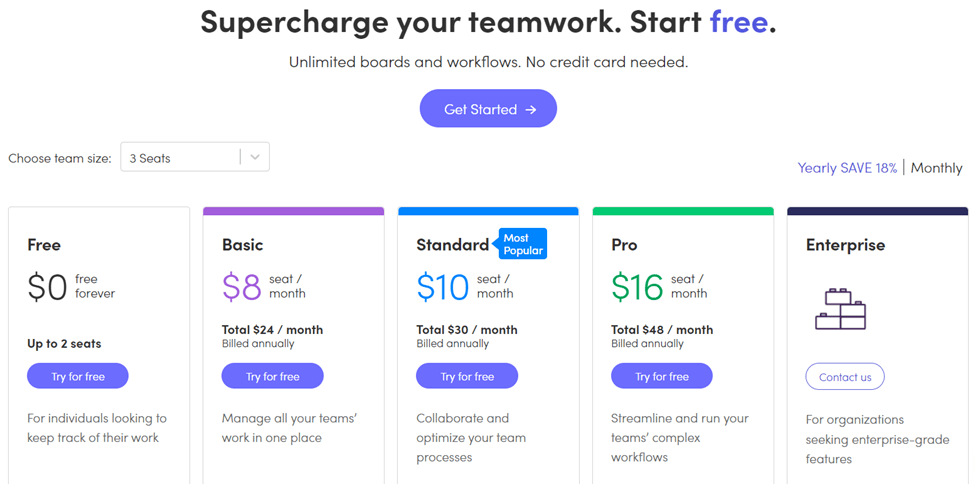
Monday.com is one of the best Agile solutions available with many different Agile tools in one space. While Zoho has lower pricing for what you get, Monday.com offers a complete project management solution for a little more money.
Monday.com offers five plans:
- Free
- Basic: $8/user/month
- Standard: $10/user/month
- Pro: $16/user/month
- Enterprise: Custom pricing
Small businesses may get by on the free plan with its unlimited boards and documents. Still, it limits your team size with only two users allowed.
The Basic package doesn’t add many new features, but you do get unlimited items and free viewers, plus more storage. Upgrading to Standard lets you make more use of other Agile features with more charts, including Gantt charts and calendar views. It even gives you the ability to automate your tasks.
The Pro plan lets you work using private boards, and you get 25,000 automations and integrations per month. Enterprise is by far the most customizable package. With it, you can set your own automations and integrations, as well as get advanced analytics and reporting to make sure your projects stay on track.
Despite how much Monday.com has to offer, we still put Zoho ahead with pricing. It doesn’t make you purchase a minimum number of seats with your plan. Monday.com does, so even with its cheapest plan, you won’t pay less than $24 per month.
Multiple Productivity Methods: Agile Wins
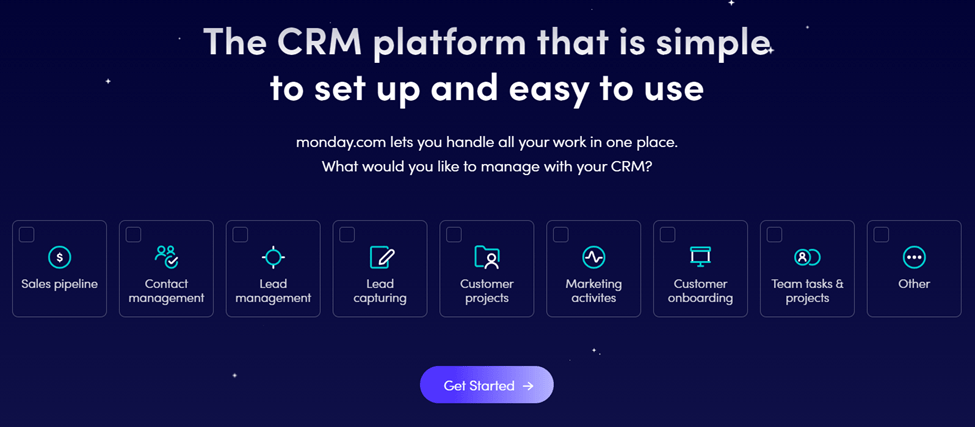
Scrum’s productivity method works well on its own, but it’s only one method. It works well for longer projects that you need to break down, but its main focus is sprints.
Agile has a method for everything, which makes it more versatile and better at achieving overall results. With it, you can use frameworks that include:
- Kanban
- Scrum
- XP
- Crystal
- Lean Software Development (LSD)
- Disciplined Agile (DA)
- Rapid Application Development (RAD)
- Dynamic Systems Development (DSDM)
Each one offers a transparent look at different project stages, which makes it easier to see how they can all impact your team’s productivity. With so many options, you can customize your team’s process based on team size, industry, and even specific projects.
Flexible Application: Agile Wins
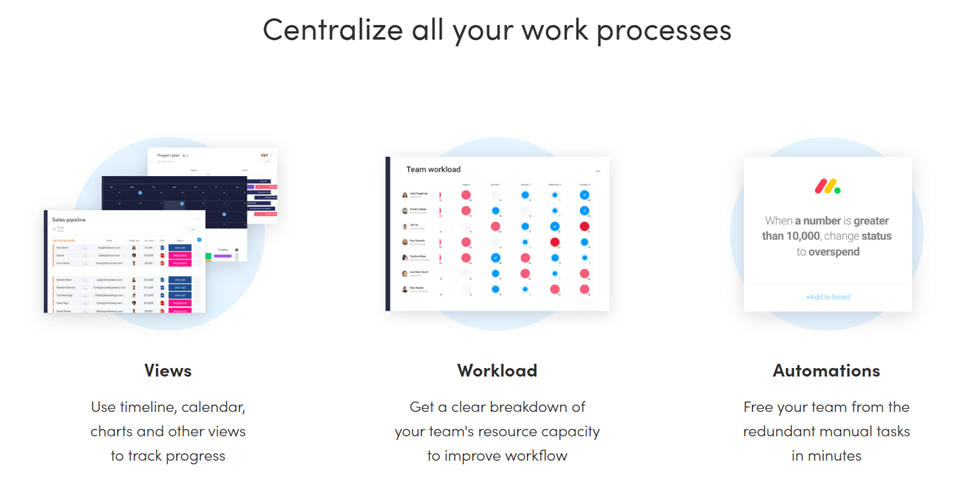
Scrum started in software engineering, but it’s spread far beyond that now. Some teams may find it less workable because of the timed sprints, but its flexibility means you can tailor it to most industries.
Agile broadens that application further with its methodologies. Combining them can create ways to apply different frameworks to specific companies beyond the industry itself.
Agile works well for everything from construction to pharmaceuticals to education. Its visual tools and transparent processes make collaboration easy, so you can include your whole team and run more successful projects.
Automated Tasks: Scrum Wins
Zoho lets you automate tasks without limits using its Professional plan. Monday.com doesn’t let you automate unless you buy the Standard tier at a minimum $30 per month. Even then, without the Enterprise package, you’ll always have a limit.
With Zoho, you can set up automations in seconds using the drag and drop system. As a result, your team can work faster when it no longer has to worry about tedious manual procedures.
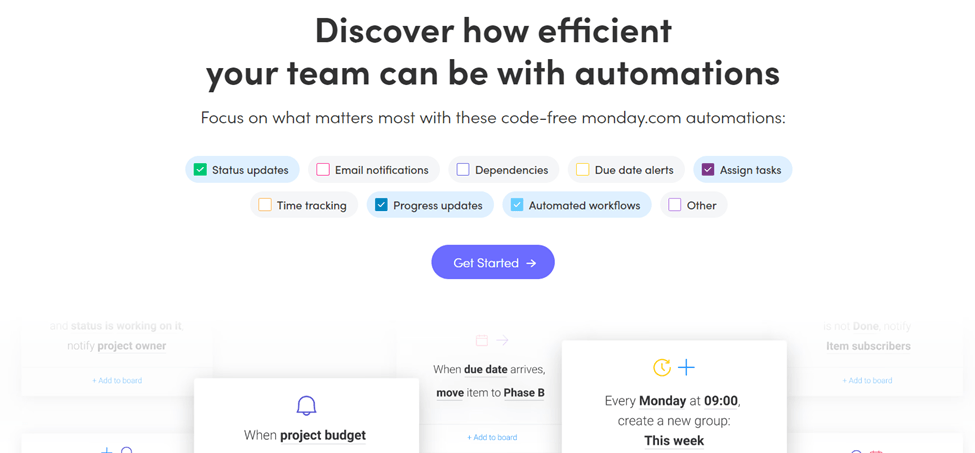
Monday.com’s lack of automations with its cheaper plans means you can’t use the software fully, even if those functions may be critical for your team’s productivity. That said, Agile itself has the potential for automation with almost every framework.
Sometimes, different frameworks make automation more complicated, especially when you’re working with more than one method. Scrum comes out ahead here largely due to how easy it makes the automation process.
Predetermined Roles: Scrum Wins
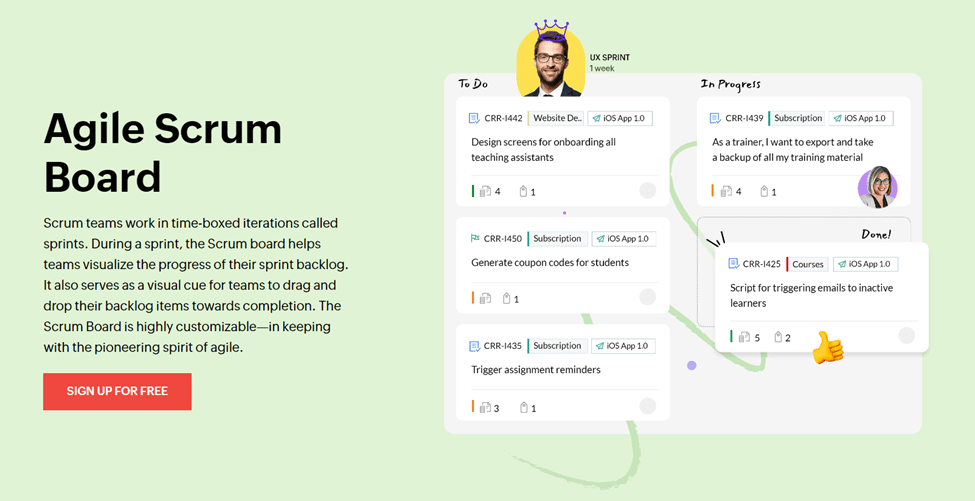
Scrum boards come with predefined roles built into the software, which other Agile solutions, like Kanban, don’t have. These roles make it easier to designate project leaders while still allowing everyone to participate equally in the project.
Scrum comes with three roles:
- Scrum master
- Product owner
- Development team
Designated roles allow you to assign tasks more efficiently and decide who has what job within the board. Team members can still move their own tasks and work at their own paces. The roles themselves don’t give any one user more power over the rest.
With software like Monday.com, you don’t have roles built-in. Agile software in general sometimes does, but if you use too many different frameworks, your team can still get disorganized or inconsistent. It can also take time to figure out how best to make each role work, whereas scrum sets you up for success right away.
Timed Work Sprints: Scrum Wins
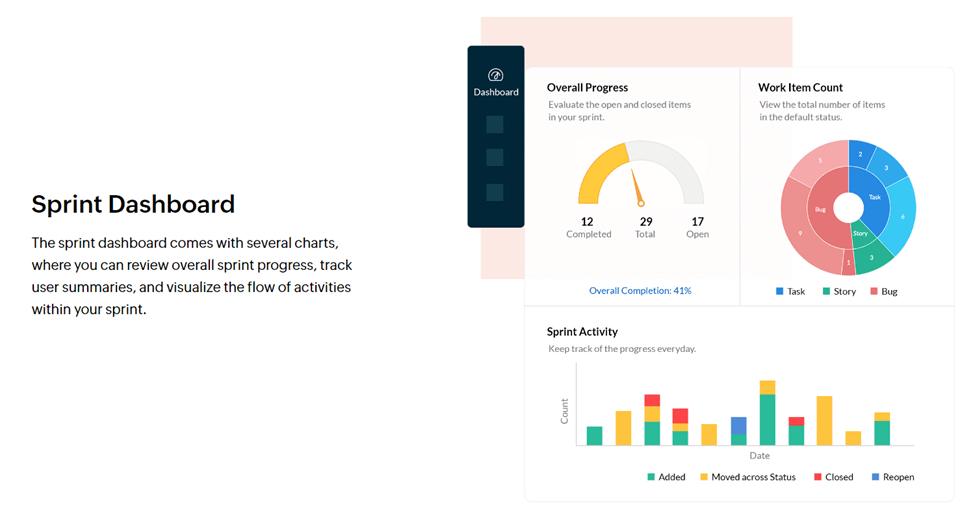
Scrum is the only Agile framework that uses timed sprints to increase productivity. These sprints let you set a timeline as short as one week and as long as a month to determine how long team members have to complete given tasks.
Each task and sprint is connected to the one before it. That means that a team member can’t move on to the next task until they complete the current sprint. This setup can work to a team’s advantage, but it can also make it hard to get ahead, especially if there’s a debate elsewhere in the project.
Agile as a philosophy doesn’t include sprints in most frameworks. Not all methodologies lend themselves well to sprints, so this system is unique to scrum.
Collaborative Features: Agile Wins
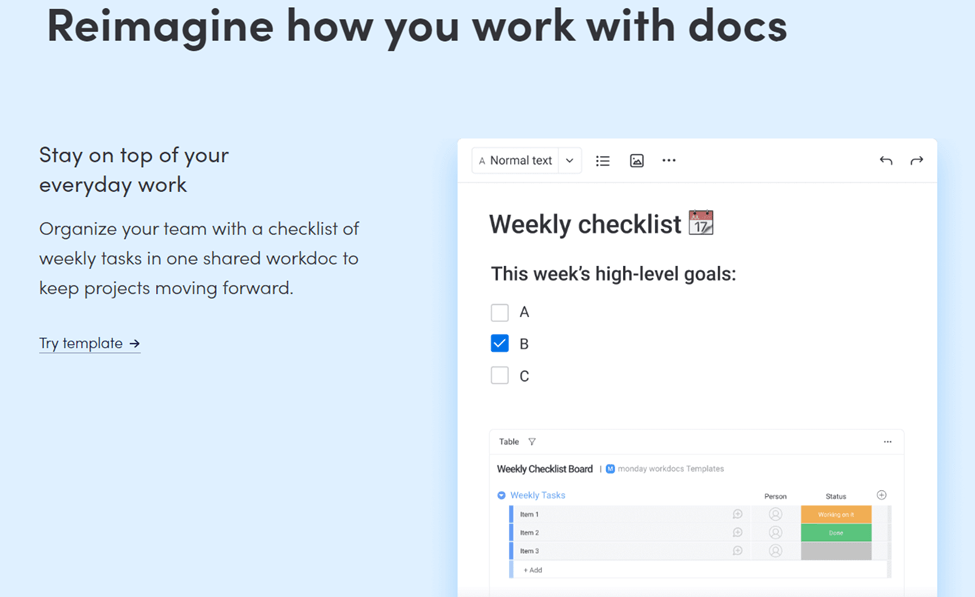
Scrum offers plenty of collaborative features on its own. Everyone works on the same board, and you can leave comments, work on shared documents, and chat with Zoho. Plus, communicating with clients and vendors with the portal means everyone stays on the same page.
Agile’s collaborative features go beyond scrum. For example, the Crystal method helps team members communicate effectively by focusing on the human aspect of your project, whereas scrum is more task-based. The XP method increases communication between customers and team members.
Agile’s strength comes in the form of varied communication and collaborative methods. With software like Monday.com, you have several ways to collaborate. Since different collaborative styles work for different teams, having more options with Agile as a whole can create a more cohesive project that works for individual team members as well as the collective.
Integrations and Apps: Agile Wins
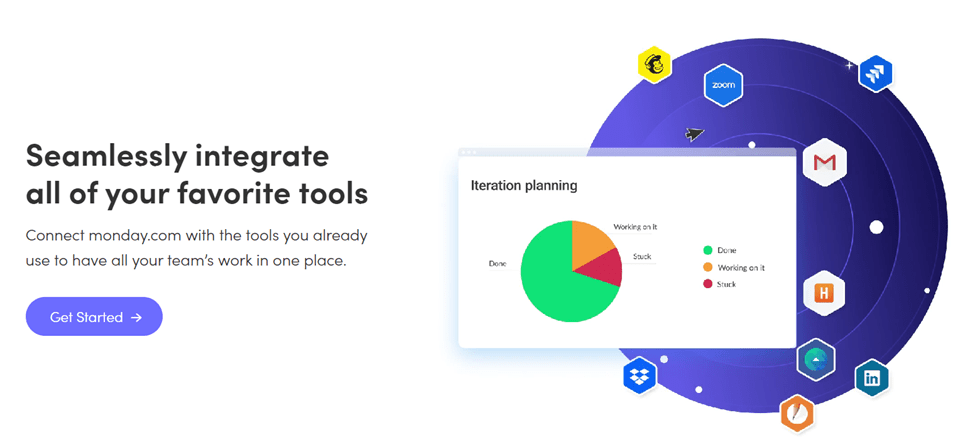
Zoho has about 15 integrations. Most of them are its own apps, like Zoho Cliq for chat and Zoho Analytics for reporting.
It does have some other integrations, like Google Drive, GitHub, and Zapier, but they’re limited, and many teams need more. Other scrum boards may have more, but you can make more use of a broader Agile solution with more capabilities.
Monday.com has 50+ integrations, giving it a much wider range than Zoho and scrum. You can also use its app marketplace to choose from categories that include marketing, reporting and analytics, and project management.
The software has many of the most popular apps, including Zapier, QuickBooks, HubSpot, and Mailchimp. You can also integrate it with other project management software, like Trello and Asana, to broaden your team’s functionality.
Retrospective Meetings and Feedback: Scrum Wins
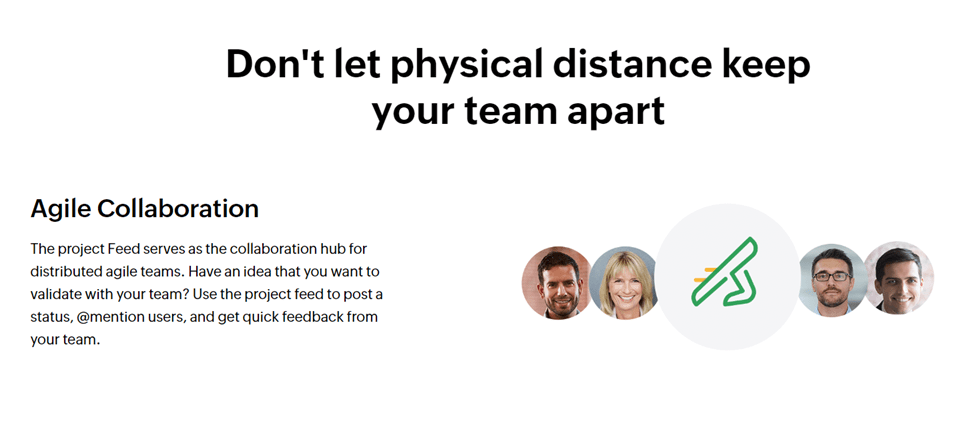
Agile doesn’t always offer all the necessary components for collecting and implementing feedback. The system is built on transparency, but not all frameworks take the time to look back over what they’ve already done and where they could improve.
Scrum does. Its Sprint Review creates space for your team to look at its work so far, identify what’s gone well, and pinpoint areas that could go better. Using retrospective meetings often allows your team to continue making these improvements throughout your project. During these meetings, team members can submit their unique feedback and contribute to making changes either during the process or after that piece of the project is complete.
Final Verdict
Because scrum is part of the Agile philosophy, there’s no need to choose between them. The real question is whether you decide to integrate other frameworks within the Agile philosophy with your team.
If scrum works well on its own, you may not need to fix something that isn’t broken. However, it may be worth exploring other Agile methods, like Crystal and XP, to determine if their focuses can improve your productivity and collaboration.
We’ve put together even more project management software solutions to help you find the one that works best for your business.
